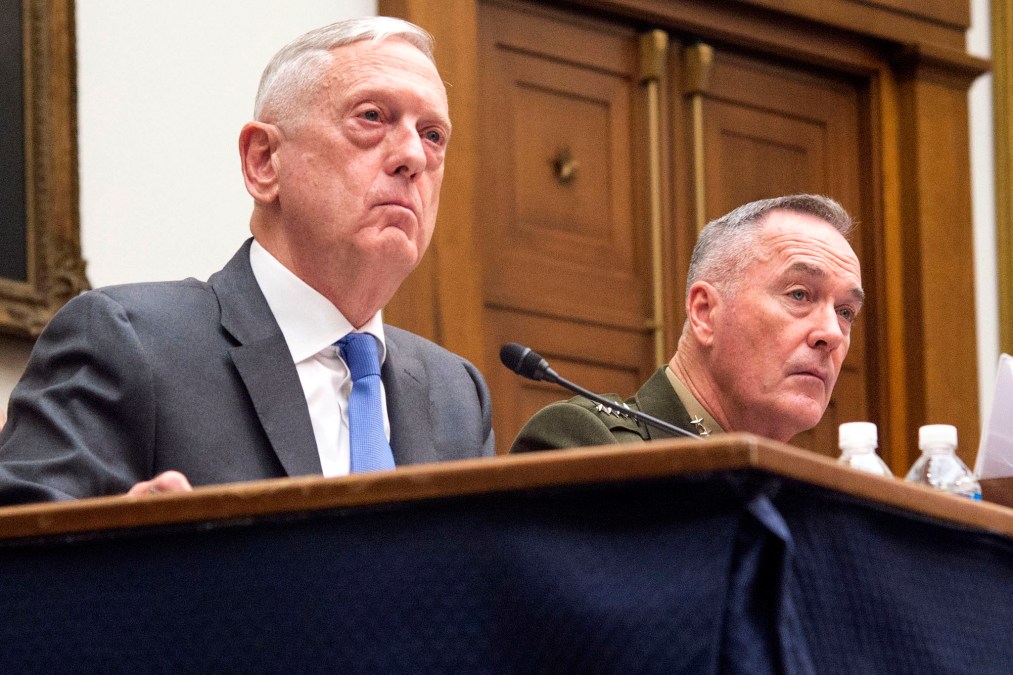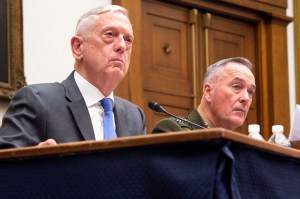Pentagon launching joint office focused on artificial intelligence

The Defense Department has plans to open a joint office focused on developing artificial intelligence prototypes.
Michael Griffin, the newly appointed and first undersecretary of Defense for research and engineering, said Friday during a discussion at the Hudson Institute that his office is creating a so-called “Joint Artificial Intelligence Office” and similar offices for other emerging technologies, like hypersonics.
Griffin’s remarks came on the tail of Defense Secretary Jim Mattis’ Senate testimony Thursday in which he described his aggressive agenda for Pentagon research and engineering.
“We’re going to move things into production, prototyping,” Mattis said. “We’re not going to have more papers, we’re going to move on hypersonics, move on AI.”
He explained that means coordinated office across the department, “not a bunch of different organizations all feeling their way forward.”
“We’re looking at a joint office where we would concentrate all of DOD’s efforts since we have a number of AI efforts underway right now, we’re looking at pulling them all together,” Mattis said.
Griffin, whose role somewhat resembles that of a CTO for the Pentagon, clarified Mattis’ words, saying not to expect these offices to resemble typical joint program offices, like the highly criticized one created to develop the F-35 fighter jet, which was delivered well over budget and several years later than scheduled.
He did say he expects they’ll integrate “elements of the intelligence community.” But beyond that, he had little to offer. His office is still trying to figure out “how we would create it, where we would locate it, who would head it, who would participate in it.”
“When we make a decision, we’re not going to keep it a secret,” Griffin said. “But I can’t tell you that I’ve got an answer today.” His team is also working to provide Congress a requested report on the office’s development.
Griffin took over in February as the first undersecretary for research and engineering, a position created by the split of the undersecretary for acquisition, technology and logistics. That split also resulted in the new position of undersecretary of Defense for acquisition and sustainment, filled by Ellen Lord.
During his appearance Friday, Griffin detailed how he views his new role.
“My job is not F-35. My job is what comes after F-35,” he said. “What are we doing to modernize our way of war and the weapons we bring to it that we don’t have today.”
He also has the opportunity to set the tone for what the newly created position should do. “ My primary purpose is to get the things started off right and set the proper tone for what we ought to be doing.”
But he at least has a shortlist of areas to focus on, as highlighted in the National Defense Strategy.
“Even the unclassified version of the [National Defense Strategy] is unmistakably blunt,” Griffin said. It calls out “10 or a dozen areas of modernization priority, areas in which the department and national security community in general must modernize to get ahead and keep ahead of our adversaries.”
He, too, was blunt. The Pentagon must evolve to keep its edge, he said — it can no longer rest on its laurels. “The U.S. has been on holiday for 25 years,” he said.





